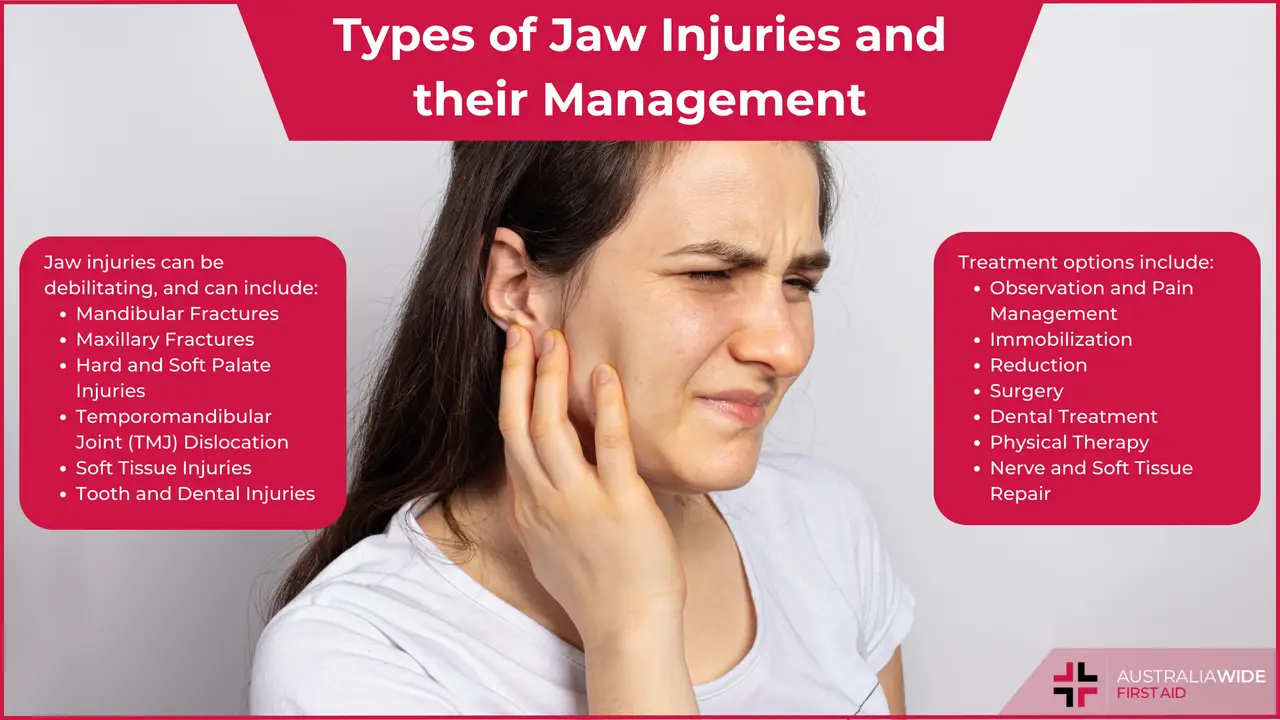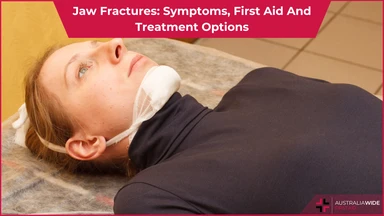Types of Jaw Injuries and their Management


The human jaw, a marvel of anatomical engineering, plays a pivotal role in our everyday lives, enabling us to speak, eat, and express a range of emotions.
The entire jaw complex is made up of the upper jaw or maxilla and the lower jaw or mandible. The maxilla is attached to the skull base and is immobile. The mandible is the mobile part of the jaw and enables movement such as talking and chewing. The point where the maxilla and mandible meet is known as the temporomandibular joint, that is the jaw joint.
The entire jaw complex is delicate and susceptible to injuries. Here we will discuss of the various forms of jaw injury and their management.
Jaw Fractures
Mandibular Fractures: These involve fractures of the lower jaw (mandible) and can occur in various regions of the jaw, such as the symphysis, angle, condyle, or body of the mandible.
Maxillary Fractures: Fractures of the upper jaw (maxilla) can also occur in different regions and may be referred to as Le Fort fractures.
Hard and Soft Palate Injuries
These may occur in association with jaw injuries, causing damage to the roof of the mouth and surrounding tissues.
Temporomandibular Joint (TMJ) Dislocation
TMJ dislocation occurs when the jaw joint is forced out of its normal position. This can be a result of trauma, excessive jaw movement, or underlying joint issues. Dislocations can be open (visible) or closed (not visible).
Soft Tissue Injuries
Soft tissue injuries affect the skin, muscles, and other tissues surrounding the jaw area. These injuries include lacerations, cuts, abrasions, or bruising.
Tooth and Dental Injuries
Dental injuries can occur in conjunction with jaw injuries and involve cracked, chipped, or avulsed (knocked out) teeth.

The approach to treating jaw injuries is contingent on the specific type and severity of the injury. Proper management is pivotal for a successful recovery. Below is an overview of various treatment options for jaw injuries:
Observation and Pain Management
Minor injuries, such as soft tissue injuries or small fractures, often resolve with time. Pain can be alleviated using non-prescription pain relief medications like acetaminophen or non-steroidal anti-inflammatory drugs (NSAIDs).
Immobilization
Immobilization is sometimes necessary for certain jaw fractures to foster healing and prevent further harm. In specific cases, the jaw may be temporarily wired or banded to limit movement and promote recovery. Adhering to a soft diet, which comprises foods that require minimal chewing, can give the jaw the rest it needs for healing. This dietary adjustment may be required for a few weeks.
Reduction
In cases of jaw dislocations, a healthcare professional may gently manipulate the jaw to realign it with its normal position.
Surgery
More severe fractures or dislocations often necessitate surgical intervention. Surgical techniques encompass:
Dental Treatment
Dentists may need to repair or replace damaged teeth, gums, or other dental structures impacted by the injury. Procedures may include dental crowns, bridges, or dental implants
Physical Therapy
Physical therapy may be advised for certain jaw injuries to restore proper jaw function, reduce muscle stiffness, and enhance mobility.
Nerve and Soft Tissue Repair
Injuries to nerves or soft tissues may necessitate specialized treatment or surgical repair to restore function and sensation.
Follow-Up Care
Regular follow-up appointments are crucial to monitor the healing progress and address any complications that may emerge during the recovery process.
In conclusion, it is essential to opt for proper preventive measures to safeguard yourself against jaw injuries.
Consult a healthcare professional promptly in case of a jaw injury and ensure proper follow-up for an uneventful healing.

March 6, 2025
Falls are one of the most common causes of injury, particularly among children and older adults. Whether it’s a simple trip or a serious fall from height, knowing how to administer first aid can prevent further injury and, in some cases, save a life.

October 1, 2024
The musculoskeletal system is the foundation of human movement, support, and protection, playing a critical role in our ability to perform everyday tasks. Understanding the components and functions of the musculoskeletal system is essential for preventing injuries and managing conditions that may arise, particularly in workplaces where manual handling tasks are common.

August 28, 2024
A jaw fracture is a break or crack in the jawbone. This type of injury can occur due to various reasons and may result in considerable pain and difficulty in performing everyday activities like eating and speaking.